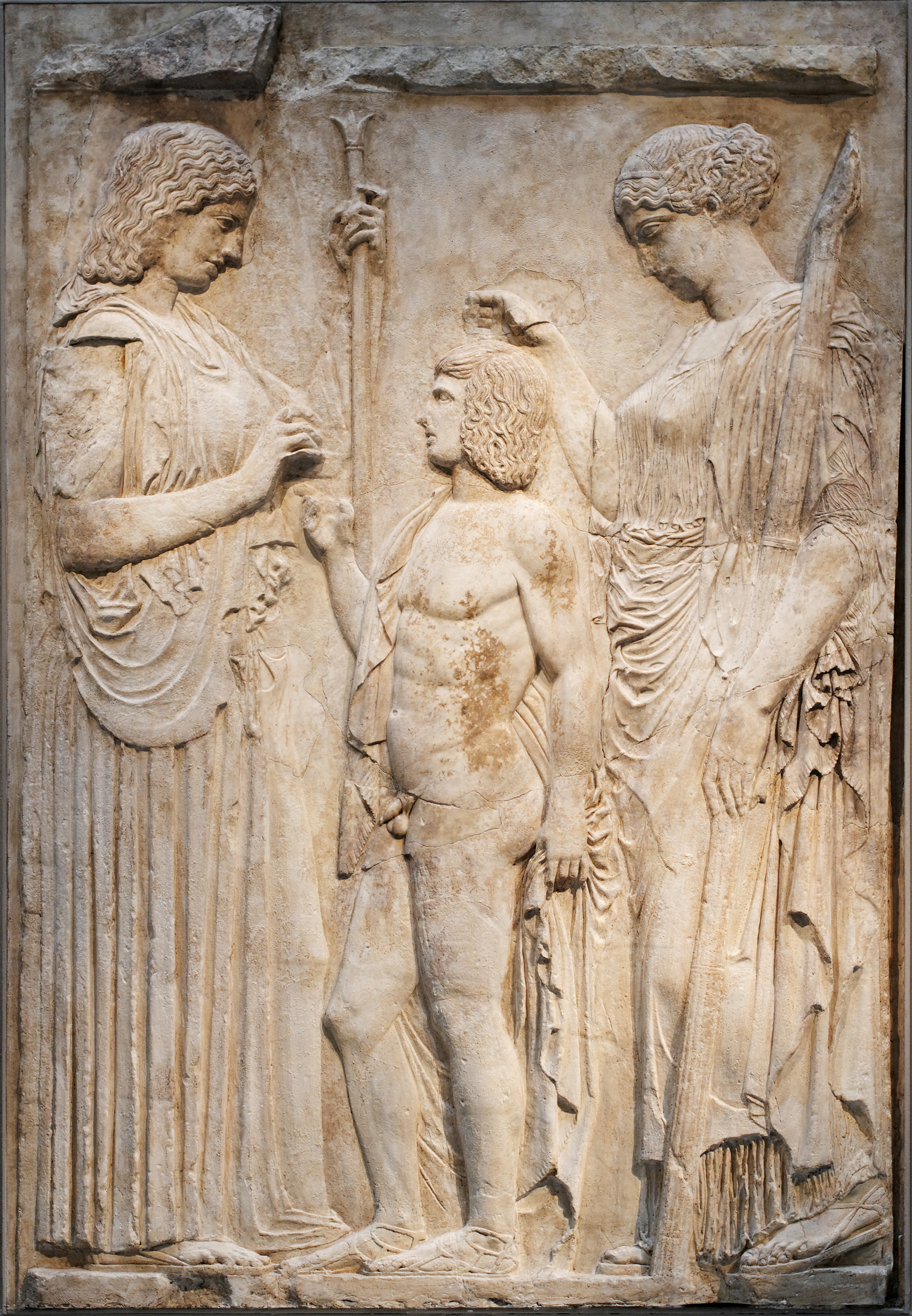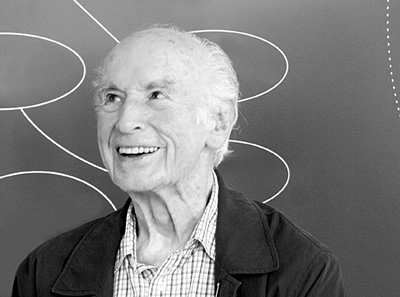|
Eleusinia
The Eleusinian Mysteries ( el, Ἐλευσίνια Μυστήρια, Eleusínia Mystḗria) were initiations held every year for the cult of Demeter and Persephone based at the Panhellenic Sanctuary of Elefsina in ancient Greece. They are the "most famous of the secret religious rites of ancient Greece". Their basis was an old agrarian cult, and there is some evidence that they were derived from the religious practices of the Mycenean period.Dietrich (1975) ''The origins of Greek Religion''. Bristol Phoenix Press pp. 166, 167Walter Burkert. (1985)''Greek Religion''. Harvard University Press. p. 285 The Mysteries represented the myth of the abduction of Persephone from her mother Demeter by the king of the underworld Hades, in a cycle with three phases: the ''descent'' (loss), the ''search'', and the ''ascent'', with the main theme being the ''ascent'' () of Persephone and the reunion with her mother. It was a major festival during the Hellenic era, and later spread to Rome ... [...More Info...] [...Related Items...] OR: [Wikipedia] [Google] [Baidu] |
Persephone
In ancient Greek mythology and religion, Persephone ( ; gr, Περσεφόνη, Persephónē), also called Kore or Cora ( ; gr, Κόρη, Kórē, the maiden), is the daughter of Zeus and Demeter. She became the queen of the underworld after her abduction by and marriage to her uncle Hades, the king of the underworld.Martin Nilsson (1967). ''Die Geschichte der Griechische Religion'' Vol I pp 462–463, 479–480 The myth of her abduction, her sojourn in the underworld, and her temporary return to the surface represents her functions as the embodiment of spring and the personification of vegetation, especially grain crops, which disappear into the earth when sown, sprout from the earth in spring, and are harvested when fully grown. In Classical Greek art, Persephone is invariably portrayed robed, often carrying a sheaf of grain. She may appear as a mystical divinity with a sceptre and a little box, but she was mostly represented in the process of being carried off by Hades. ... [...More Info...] [...Related Items...] OR: [Wikipedia] [Google] [Baidu] |
Demeter
In ancient Greek religion and mythology, Demeter (; Attic: ''Dēmḗtēr'' ; Doric: ''Dāmā́tēr'') is the Olympian goddess of the harvest and agriculture, presiding over crops, grains, food, and the fertility of the earth. Although she is mostly known as a grain goddess, she also appeared as a goddess of health, birth, and marriage, and had connections to the Greek Underworld, Underworld. She is also called Deo (). In Greek tradition, Demeter is the second child of the Titans Rhea (mythology), Rhea and Cronus, and sister to Hestia, Hera, Hades, Poseidon, and Zeus. Like her other siblings but Zeus, she was swallowed by her father as an infant and rescued by Zeus. Through her brother Zeus, she became the mother of Persephone, a fertility goddess. One of the most notable Homeric Hymns, the ''Homeric Hymn to Demeter'', tells the story of Persephone's abduction by Hades and Demeter's search for her. When Hades, the King of the Underworld, wished to make Persephone his wife ... [...More Info...] [...Related Items...] OR: [Wikipedia] [Google] [Baidu] |
Elefsina
Elefsina ( el, Ελευσίνα ''Elefsina''), or Eleusis (; Ancient Greek: ''Eleusis'') is a suburban city and municipality in the West Attica regional unit of Greece. It is situated about northwest from the centre of Athens and is part of its metropolitan area. It is located in the Thriasio Plain, at the northernmost end of the Saronic Gulf. North of Elefsina are Mandra and Magoula, while Aspropyrgos is to the northeast. It is the site of the Eleusinian Mysteries and the birthplace of Aeschylus. Today, Elefsina is a major industrial centre, with the largest oil refinery in Greece as well as the home of the Aeschylia Festival, the longest-lived arts event in the Attica Region. On 11 November 2016, Elefsina was named the European Capital of Culture for 2021. Etymology The word Eleusis first appears at the Orphic hymn «Δήμητρος Ελευσινίας, θυμίαμα στύρακα». Also Hesychius of Alexandria reports that the older name for Eleusis was Saesara ... [...More Info...] [...Related Items...] OR: [Wikipedia] [Google] [Baidu] |
Eleusis
Elefsina ( el, Ελευσίνα ''Elefsina''), or Eleusis (; Ancient Greek: ''Eleusis'') is a suburban city and Communities and Municipalities of Greece, municipality in the West Attica regional unit of Greece. It is situated about northwest from the centre of Athens, Greece, Athens and is part of its metropolitan area. It is located in the Thriasio Plain, at the northernmost end of the Saronic Gulf. North of Elefsina are Mandra, Greece, Mandra and Magoula, Attica, Magoula, while Aspropyrgos is to the northeast. It is the site of the Eleusinian Mysteries and the birthplace of Aeschylus. Today, Elefsina is a major industrial centre, with the largest oil refinery in Greece as well as the home of the Aeschylia Festival, the longest-lived arts event in the Attica Region. On 11 November 2016, Elefsina was named the European Capital of Culture for 2021. Etymology The word Eleusis first appears at the Orphic hymn «Δήμητρος Ελευσινίας, θυμίαμα στύρα ... [...More Info...] [...Related Items...] OR: [Wikipedia] [Google] [Baidu] |
Hades
Hades (; grc-gre, ᾍδης, Háidēs; ), in the ancient Greek religion and myth, is the god of the dead and the king of the underworld, with which his name became synonymous. Hades was the eldest son of Cronus and Rhea, although this also made him the last son to be regurgitated by his father. He and his brothers, Zeus and Poseidon, defeated their father's generation of gods, the Titans, and claimed rulership over the cosmos. Hades received the underworld, Zeus the sky, and Poseidon the sea, with the solid earth, long the province of Gaia, available to all three concurrently. In artistic depictions, Hades is typically portrayed holding a bident and wearing his helm with Cerberus, the three-headed guard dog of the underworld, standing to his side. The Etruscan god Aita and the Roman gods Dis Pater and Orcus were eventually taken as equivalent to Hades and merged into Pluto, a Latinisation of Plouton ( grc-gre, , Ploútōn), itself a euphemistic title often given to Had ... [...More Info...] [...Related Items...] OR: [Wikipedia] [Google] [Baidu] |
Eileithyia
Eileithyia or Ilithyiae or Ilithyia (; grc-gre, Εἰλείθυια; (''Eleuthyia'') in Crete, also (''Eleuthia'') or (''Elysia'') in Laconia and Messene, and (''Eleuthō'') in literature)Nilsson Vol I, p. 313 was the Greek goddess of childbirth and midwifery, and the daughter of Zeus and Hera. In the cave of Amnisos (Crete) she was related with the annual birth of the divine child, and her cult is connected with ''Enesidaon'' (the earth shaker), who was the chthonic aspect of the god Poseidon. It is possible that her cult is related with the cult of Eleusis. In his ''Seventh Nemean Ode'', Pindar refers to her as the maid to or seated beside the Moirai (Fates) and responsible for the creation of offspring. Her son was Sosipolis, who was worshiped at Elis. Etymology The earliest form of the name is the Mycenaean Greek , ''e-re-u-ti-ja'', written in the Linear B syllabic script. Ilithyia is the latinisation of '. The etymology of the name is uncertain, but debated am ... [...More Info...] [...Related Items...] OR: [Wikipedia] [Google] [Baidu] |
Entheogen
Entheogens are psychoactive substances that induce alterations in perception, mood (psychology), mood, consciousness, cognition, or behavior for the purposes of engendering spiritual development or otherwiseRätsch, Christian, ''The Encyclopedia of Psychoactive Plants: Ethnopharmacology and Its Applications'' pub. Park Street Press 2005 in sacred contexts. Anthropological study has established that entheogens are used for religion, religious, Magic (supernatural), magical, shamanism, shamanic, or spirituality, spiritual purposes in many parts of the world. Entheogens have traditionally been used to supplement many diverse practices geared towards achieving Transcendence (religion), transcendence, including divination, meditation, yoga, sensory deprivation, healings, asceticism, prayer, trance, rituals, chanting, Imitation of sounds in shamanism, imitation of sounds, hymns like peyote songs, Drum circle, drumming, and ecstatic dance. The Psychedelic drug, psychedelic experience ... [...More Info...] [...Related Items...] OR: [Wikipedia] [Google] [Baidu] |
Initiation
Initiation is a rite of passage marking entrance or acceptance into a group or society. It could also be a formal admission to adulthood in a community or one of its formal components. In an extended sense, it can also signify a transformation in which the initiate is 'reborn' into a new role. Examples of initiation ceremonies might include Christian baptism or confirmation, Jewish bar or bat mitzvah, acceptance into a fraternal organization, secret society or religious order, or graduation from school or recruit training. A person taking the initiation ceremony in traditional rites, such as those depicted in these pictures, is called an ''initiate''. See also rite of passage. Characteristics William Ian Miller notes the role of ritual humiliation in comic ordering and testing. Mircea Eliade discussed initiation as a principal religious act by classical or traditional societies. He defined initiation as "a basic change in existential condition", which liberates man from p ... [...More Info...] [...Related Items...] OR: [Wikipedia] [Google] [Baidu] |
Mycenean Greece
Mycenaean Greece (or the Mycenaean civilization) was the last phase of the Bronze Age in Ancient Greece, spanning the period from approximately 1750 to 1050 BC.. It represents the first advanced and distinctively Greek civilization in mainland Greece with its palatial states, urban organization, works of art, and writing system.Lazaridis, Iosif et al.Genetic origins of the Minoans and Mycenaeans. ''Nature'', 2017Supplementary Information "The Mycenaeans", pp. 2–3).. The Mycenaeans were mainland Greek peoples who were likely stimulated by their contact with insular Minoan Crete and other Mediterranean cultures to develop a more sophisticated sociopolitical culture of their own. The most prominent site was Mycenae, after which the culture of this era is named. Other centers of power that emerged included Pylos, Tiryns, Midea in the Peloponnese, Orchomenos, Thebes, Athens in Central Greece and Iolcos in Thessaly. Mycenaean settlements also appeared in Epirus, Macedonia, on ... [...More Info...] [...Related Items...] OR: [Wikipedia] [Google] [Baidu] |
Carl A
Carl may refer to: *Carl, Georgia, city in USA *Carl, West Virginia, an unincorporated community * Carl (name), includes info about the name, variations of the name, and a list of people with the name *Carl², a TV series * "Carl", an episode of television series ''Aqua Teen Hunger Force'' * An informal nickname for a student or alum of Carleton College CARL may refer to: *Canadian Association of Research Libraries *Colorado Alliance of Research Libraries See also * Carle (other) * Charles *Carle, a surname *Karl (other) *Karle (other) Karle may refer to: Places * Karle (Svitavy District), a municipality and village in the Czech Republic * Karli, India, a town in Maharashtra, India ** Karla Caves, a complex of Buddhist cave shrines * Karle, Belgaum, a settlement in Belgaum ... {{disambig ja:カール zh:卡尔 ... [...More Info...] [...Related Items...] OR: [Wikipedia] [Google] [Baidu] |
Albert Hofmann
Albert Hofmann (11 January 1906 – 29 April 2008) was a Swiss chemist known for being the first to synthesize, ingest, and learn of the psychedelic effects of lysergic acid diethylamide (LSD). Hofmann's team also isolated, named and synthesized the principal psychedelic mushroom compounds psilocybin and psilocin. He authored more than 100 scientific articles and numerous books, including ''LSD: Mein Sorgenkind'' (''LSD: My Problem Child''). In 2007, he shared first place with Tim Berners-Lee on a list of the 100 greatest living geniuses published by ''The Daily Telegraph'' newspaper. Early life and education Albert Hofmann was born in Baden, Switzerland, on 11 January 1906. He was the first of four children to factory toolmaker Adolf Hofmann and Elisabeth ( Schenk) and was baptized Protestant. When his father became ill, Hofmann obtained a position as a commercial apprentice in concurrence with his studies. At age 20, Hofmann began his chemistry degree at the University of Zü ... [...More Info...] [...Related Items...] OR: [Wikipedia] [Google] [Baidu] |






.jpg)
.jpg)
